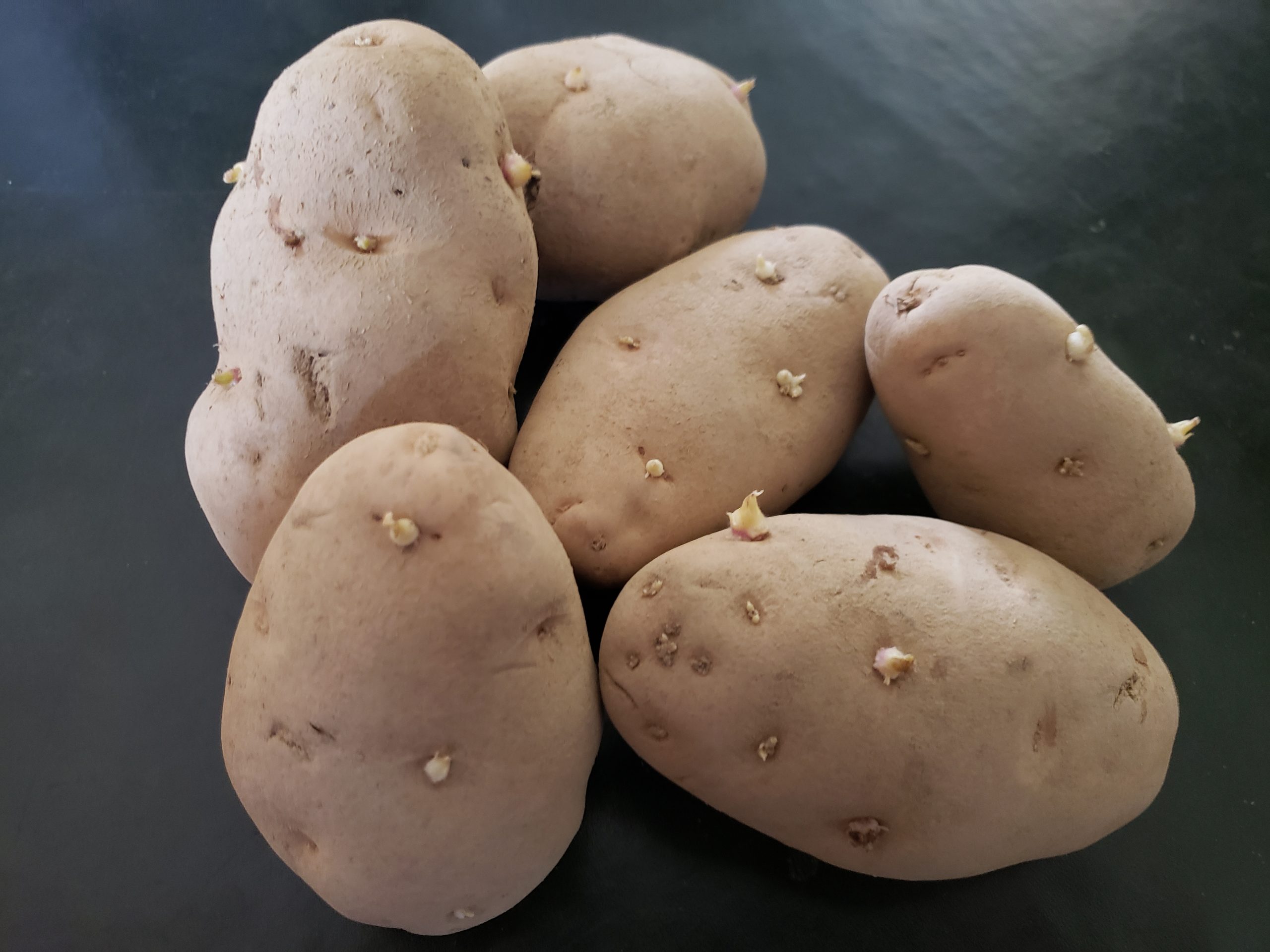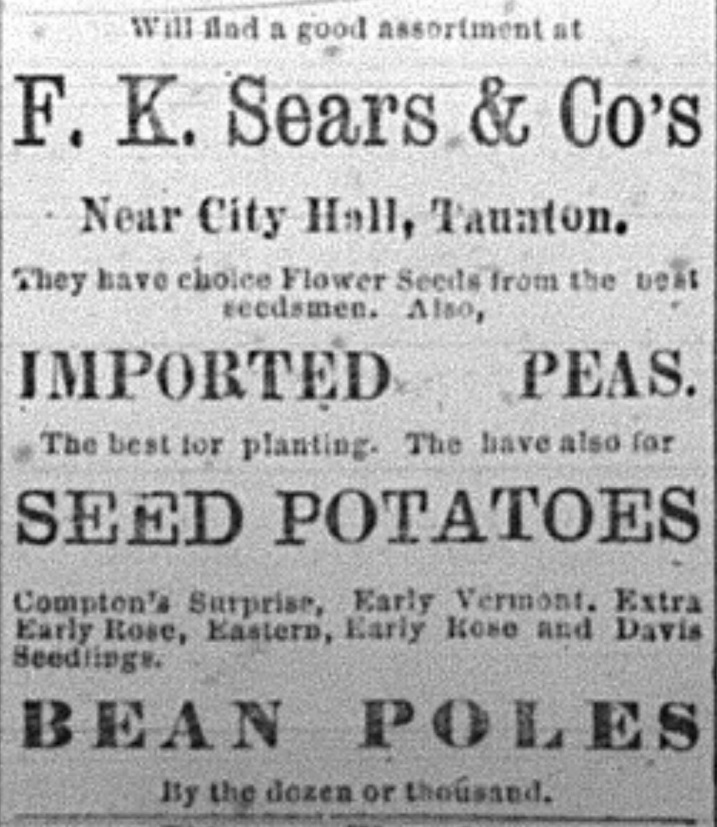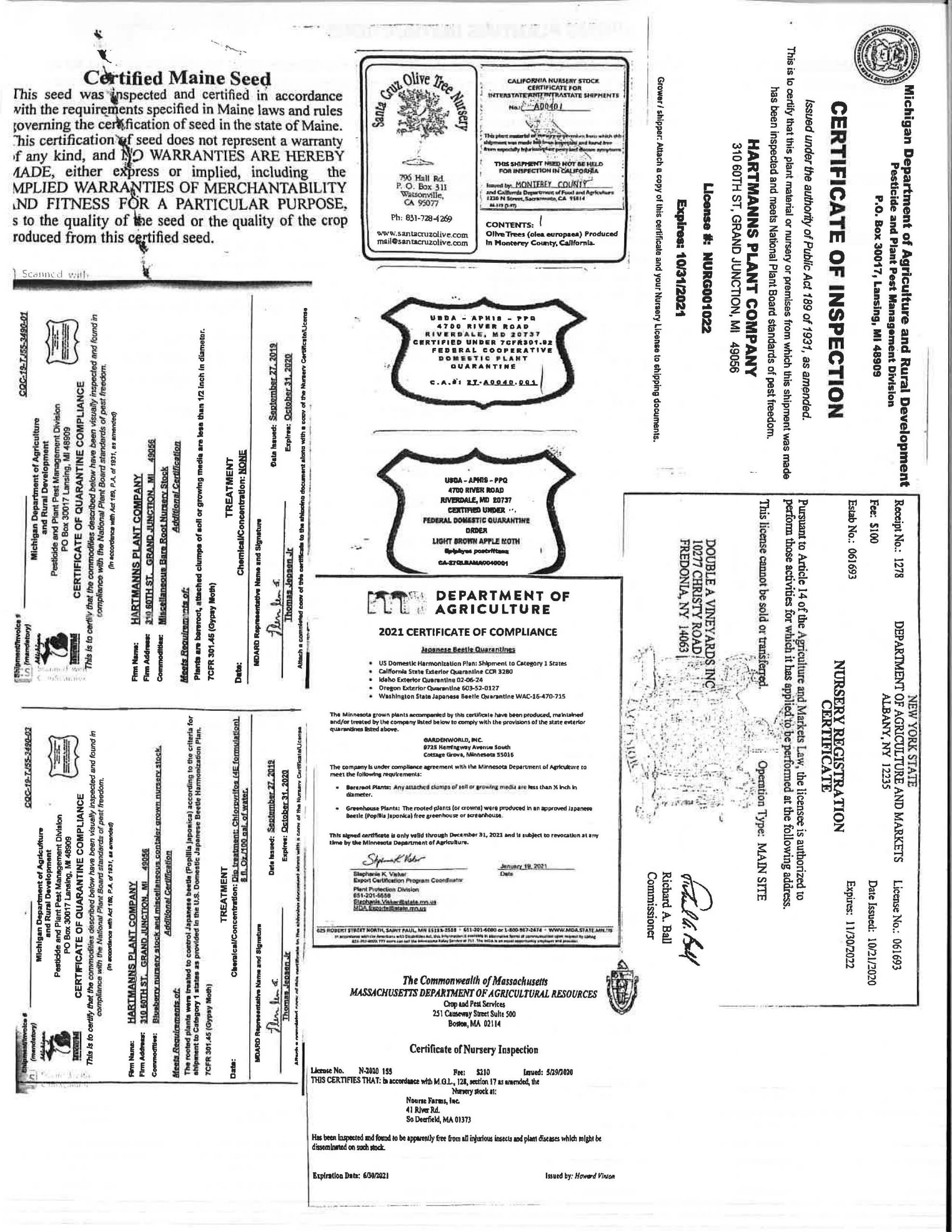
Potatoes are one of the more versatile foods that we eat and one of the earliest-introduced crops of the Old Colony region, which is how they found their way into the OCHM garden. Originally from Peru, the first potatoes grown in New England arrived on ships from Ireland. Those ships’ passengers settled in the Merrimack Valley of New Hampshire in April 1719 and immediately began growing potatoes. Over the following two decades potato production proved to be successful, and by the 1740s potatoes were not only a staple crop of the local population but also an important export of the colony. Still widely grown and widely enjoyed, today farmers in the United States produce on average over 20 million tons of potatoes each year.
For our garden, we are growing Russet Burbank potatoes. First developed in Massachusetts in 1876, Russet Burbanks quickly became the primary potato of choice for New England farmers, particularly in Maine. Today, this breed of potato is the most widely grown potato in North America and several other varieties of russets, including the popular Idaho russet potato, can trace their origins to the Burbank.

1875 seed potato advertisement from the Taunton Daily Gazette
To grow potatoes, in general, you want to start with seed potatoes, which have been specifically grown to ensure healthy plants free of disease. Potatoes are grown in all 50 states, however, to guarantee quality and disease free-potatoes, the United States restricts the growth of seed potatoes to only the 15 states that have optimal potato weather. The best weather for seed potato growth is hard, cold winters and long sunny days in the summer. Our Russet Burbank seed potatoes come from Maine and are officially certified as Maine seed potatoes with an accompanying USDA certificate from the grower. We ordered through Pinetree Garden Seeds back in January and they were shipped when it was safe to plant in April.

Our USDA Seed Potato Certificate
Once you have your seed potatoes, and the ground is workable in spring, there are two ways to go about planting depending on the size of your garden. If space is not an issue, you can plant the seed potatoes whole right into the ground. This method requires more space between potato rows as you are laying out your beds, as more plants are likely to grow from each seed potato. For smaller garden plots, like ours, we suggest cutting the seed potatoes into pieces containing 2-3 eyes per piece. This allows you to put your rows a little closer together, though you still want to try for about 3 feet between rows, as now only 2 to 3 plants will grow from each piece. One thing to note in your planning is that if you are going for the cut method you need to allow the pieces to dry for 24 hours at room temperature before planting. This gives the cut side a chance to toughen up just a bit before it goes into the ground.
Here’s a quick peek of our potato prep!
After we cut our six seed potatoes in half, we let them dry for 24 hours. The following day we dug three trenches in our plot, each 6-8 inches deep and about 2 1/2 feet apart. We then filled the bottom of each trench with compost and placed each potato piece, cut-side down into the compost. Each trench got 4 pieces of potato, about 6 inches apart. We covered our potato pieces with dirt, leveled the soil, marked our rows, and then watered the bed. It is important to note that during the entire growth process, as vines become visible, we are going to add more compost and dirt to cover the vines. This process is known as “hilling” and it keeps the potatoes working to grow high up through the hill, rather than wide. The taller the hill the deeper the tubers will be growing, and this is important as depth and darkness improve the flavor of potatoes. As the plants grow up, and wind and rain knock down the hills, we’ll keep adding compost to keep the potatoes deep down in the dirt.
Our Russet Burbank potatoes will take 100 to 125 days to mature. They can be planted when the soil is warm enough to be worked, which in some cases is 4 to 6 weeks before the last frost date, and we planted on April 29th. This (hopefully) ensures that our sprouts will start to appear after our estimated last frost, which is important as frost may damage young sprouts. If all goes according to plan, in about 4 months we will dig into the soil and hopefully uncover lots of delicious spuds!
You can see a whole video of planting our potatoes here:
UPDATE June 4: Hilling Up
Here is a “before and after” of the first “hilling up” of our potatoes. We will keep adding more material when the plant gets about 8 inches above the most recent hill.

The post Planting Potatoes first appeared on OCHM.
